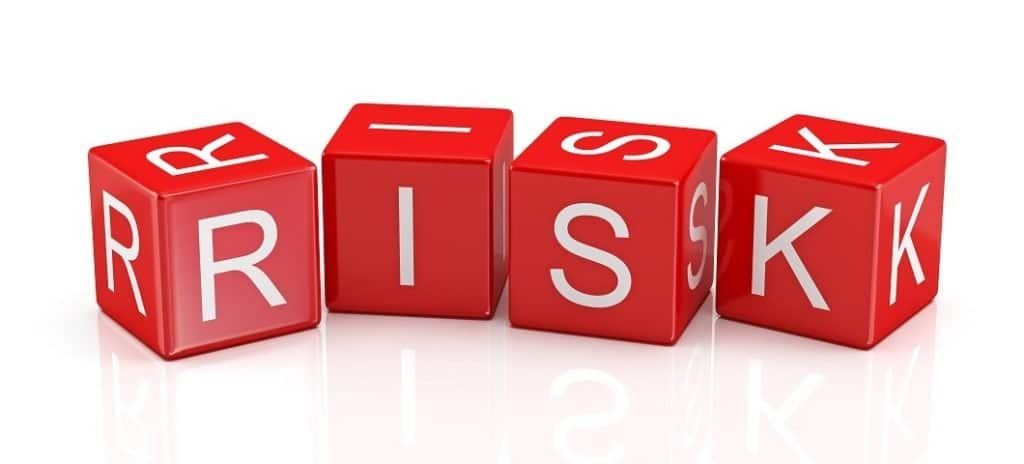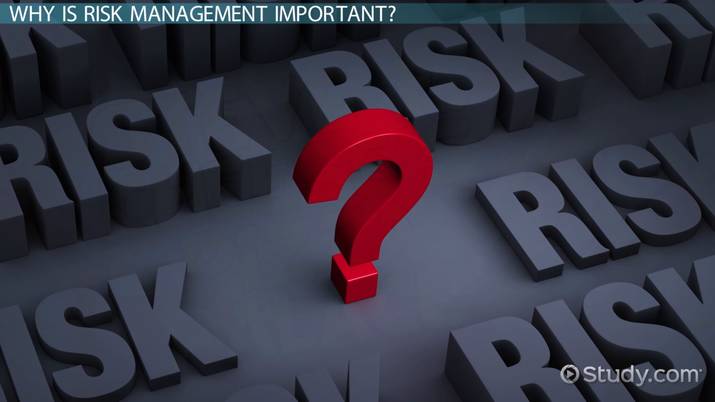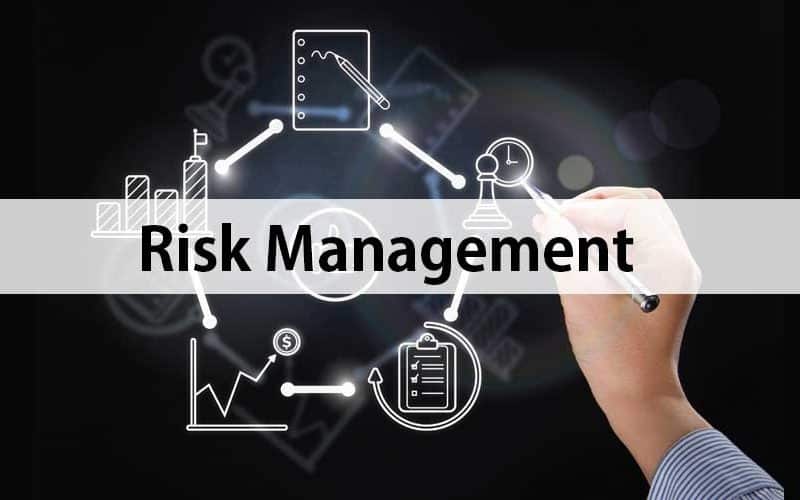Over the years, there’ve been several definitions of the term “Risk management.” This because this term cuts across tons of industries around the globe. However, if you take a closer look at them, you’d realize they are just variations of the same thing. There’s literally no difference in the message they’re trying to pass across. Finance, for example, defines it as the process of detecting possible risks ahead of time, evaluating them, and taking precautionary measures to minimize or eliminate the risk. You will come across more variations of this definition later on. But let’s drop that for now and find out how it works.
Understanding Risk Management

In simple terms, risk management is the process of identifying, analyzing, and responding to risk factors that arise over the course of a company’s operations.
When a company decides to invest, it exposes itself to a variety of financial risks. The size of such risks varies according to the type of financial instrument. These financial risks may take the form of high inflation, stock market instability, recession, bankruptcy, and so on.
For the most part, risk management is used by fund managers and investors to reduce and control the exposure of their investments to certain risks. In times of financial turmoil, not prioritizing risk management when making investment decisions could have disastrous consequences. Different types of asset groups are associated with different levels of risk.
A fixed deposit, for example, is considered a less risky investment. Equity investment, on the other hand, is regarded as a high-risk venture. Equity investors and investment managers who practice risk management prefer to diversify their portfolios to reduce risk exposure.
In other words, effective risk management entails trying to influence potential results as much as possible by responding proactively rather than reactively. As a result, good risk management has the ability to reduce both the likelihood of a risk happening and the effects of that risk.
Structures for Risk Management
Structures for risk management go beyond just identify existing risks. A good risk management structure should also evaluate and forecast the impact of uncertainties on a company. As a consequence, you must choose between accepting threats and dismissing them. However, risk acceptance or rejection is dependent on the tolerance levels that a company has set for itself.
Furthermore, risk management structures may be used to help other risk reduction programs if they are established as a disciplined and continuous mechanism for the purpose of identifying and addressing risks. Oftentimes, this includes p lanning, organization, expense control, and budgeting. Plus since the emphasis is on constructive risk management, the company is unlikely to face many surprises in this situation.
Risk Responses
- Avoidance: A company tries to minimize risk by eliminating the source of the risk.
- Mitigation: This is the process of decreasing the risk’s expected financial value by reducing the likelihood of the risk occurring.
- Acceptance: A company may be required to accept a risk under certain circumstances. This method is feasible if a company creates contingencies to minimize the risk’s effect if and when it occurs.
This method is feasible if a company creates contingencies to minimize the risk’s effect if and when it occurs.
A company must use a problem-solving approach when building contingencies. As a consequence, you’ll need to have a well-thought-out strategy that you can put into action as soon as the need arises. Such a strategy would allow a business organization to deal with obstacles or blockages to its progress. It should also be able to deal with risks as soon as they emerge.
Importance of Risk Management

Risk management is a vital activity. This is because it provides a company with the resources it needs to properly identify and handle potential risks. It is simple to minimize a risk once it has been detected. Furthermore, risk management provides a business with a foundation on which to make rational decisions.
Furthermore, risk evaluation and management are the best ways for a company to plan for events that may obstruct progress and development. When a company reviews its strategy for dealing with future threats and then establishes mechanisms to deal with them. It basically increases its chances of being successful.
Besides that, progressive risk management ensures that high-priority risks are dealt with as quickly as possible. For the most part, management would have the requisite information to make informed decisions and ensure that the company remains profitable.
Risk Management Analysis
A deviation from an anticipated result is a general concept of investment risk. This variance may be expressed in absolute terms or relative to something else, such as a market benchmark.
Although the variance could be positive or negative, most investment practitioners agree that it means some degree of the desired outcome for your investments. As a result, in order to obtain higher returns, one must be willing to take on more risk. It is also a widely held belief that increased risk is accompanied by increased volatility. Though investment professionals are always looking for — and sometimes finding — ways to minimize volatility, there is no strong consensus among them on how to do it.
The amount of volatility an investor can expect is largely dependent on the investor’s risk tolerance. Or Conversely, in the case of an investment professional, the amount of tolerance their investment goals allow. Standard deviation, a statistical measure of dispersion around a central tendency, is one of the most commonly used absolute risk measures. You look at an investment’s total return and then calculate the average standard deviation for the same time span. The potential return of the investment is likely to be one standard deviation from the average 67 percent of the time and two standard deviations from the average deviation 95 percent of the time, according to normal distributions (the familiar bell-shaped curve). This aids investors in calculating risk. They invest if they think they can withstand the financial and emotional risk.
Example
For example, the S&P 500’s average annualized total return over a 15-year period, from August 1, 1992, to July 31, 2007, was 10.7%. This number shows what transpired over the course of the entire time, but it does not disclose what occurred along the way. For the same time frame, the S&P 500’s average standard deviation was 13.5 percent. This is the difference between the average return and the actual return over the 15-year period at the most given points.
Any given result should fall within one standard deviation of the mean about 67 percent of the time and within two standard deviations about 95 percent of the time when using the bell curve model. Thus, an investor in the S&P 500 could expect a return of 10.7% plus or minus the standard deviation of 13.5 percent about 67 percent of the time; he could also predict a 27 percent (two standard deviations) rise or decrease 95 percent of the time. He invests if he can afford to lose.
Process of Risk Analysis
Risk analysis is a qualitative problem-solving methodology that employs a variety of evaluation methods to determine and rate threats in order to assess and resolve them. Here’s how the risk assessment works:
#1. Identify existing risks
The process of identifying risks primarily entails brainstorming. A company gathers its staff so that they can go over all of the potential sources of risk. The next move is to prioritize all of the threats they identify. For the most part, prioritization means first dealing with those risks that can have a direct impact on a company. This is because it is impossible to eliminate all existing threats.
#2. Assess the risks
In certain instances, problem solving entails first defining the issue and then finding a suitable solution. However, before determining how to better manage risks, a company must determine the source of the risks. You can start out by asking, “What caused such a risk, and how could it affect the business?”
#3. Develop an appropriate response
When a company decides to determine potential solutions to reduce known risks and avoid recurrence, it must first ask the following questions; What steps can be taken to ensure that the detected risk does not recur? What steps should I take if it happens again?
#4. Develop preventive mechanisms for identified risks
The ideas that were found to be useful in risk mitigation are turned into a series of projects. Then you can now turn these projects into contingency plans that can be useful in the future.
What Is the Definition of Risk Management?
Risk management is the process of discovering, evaluating, and controlling financial, legal, strategic, and security risks to an organization’s capital and earnings.
What Are the 3 Types of Risk Management?
Risks can be broadly categorized as business risks, non-business risks, and financial hazards. In order to increase shareholder value and earnings, business firms assume these types of risks.
What Is Risk Management and Examples?
In business, risk management is the process of finding, monitoring, and dealing with possible risks so that they don’t hurt an organization as much as they could. Security breaches, data loss, cyberattacks, system failures, and natural disasters are all examples of possible risks.
What Are the 5 Benefits of Risk Management?
5 Secret Advantages of Risk Management Planning:
- More efficient, consistent operations.
- Greater emphasis on security.
- More confident, successful initiatives.
- More content customers.
- A more robust bottom line.
Conclusion
Our businesses face numerous risks that can jeopardize their survival and development. As a consequence, it’s important to consider risk management’s fundamental concepts and how they can be applied to better minimize the impact of risks on businesses.
- MARKET RISKS: Best Practices and Easy Guide with Examples
- Financial risk: Definition, Types, Management, Overview, Analysis (+ free pdfs)
- Financial Risk Management: Definition & All you need to know (+practical examples)
- 5 Things You Must Do Before Starting a Business.
- Customer Experience Strategy: (15 Tips To Improve +examples)
- Construction Management at Risk: Best Practices, Contracts, Pros & Cons






